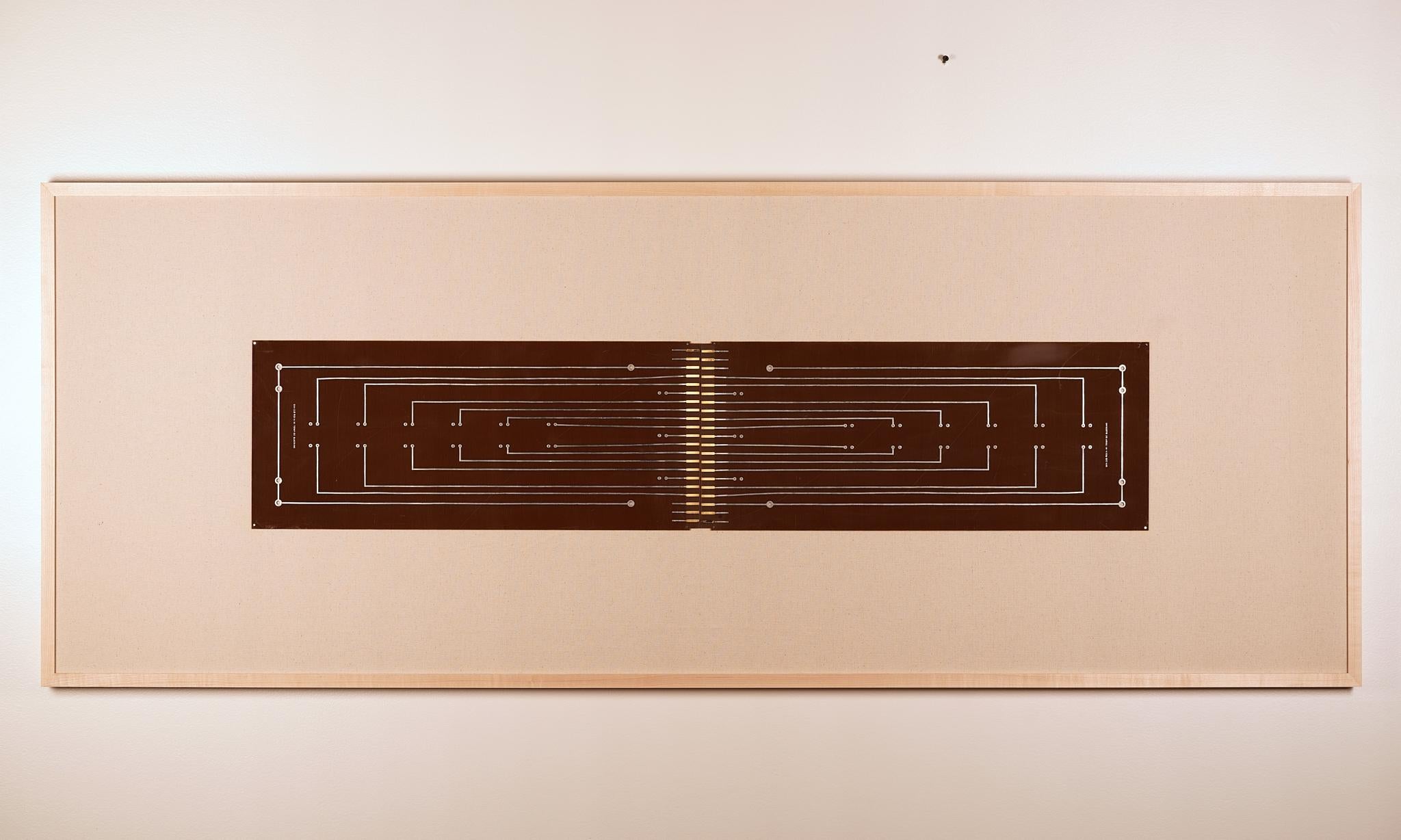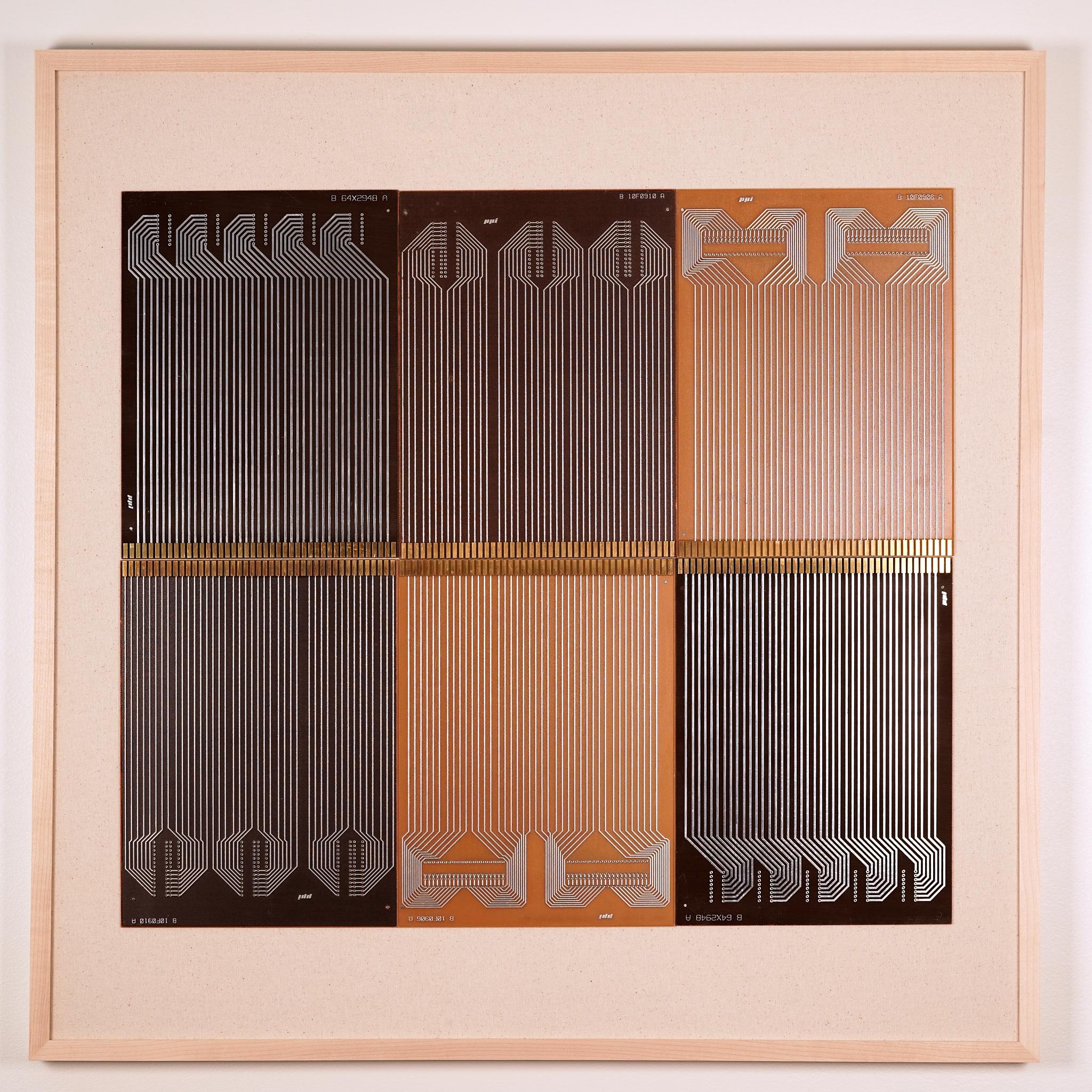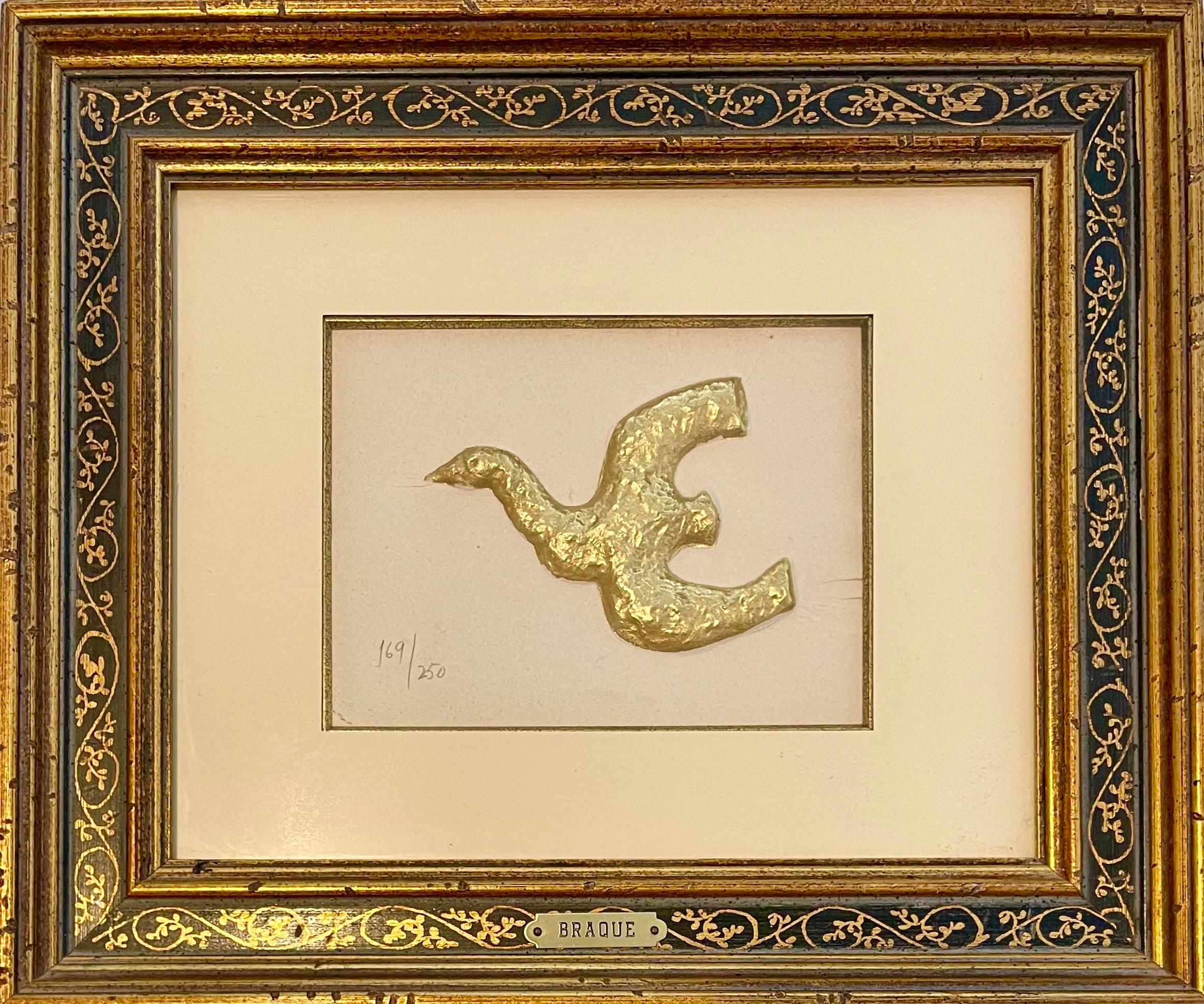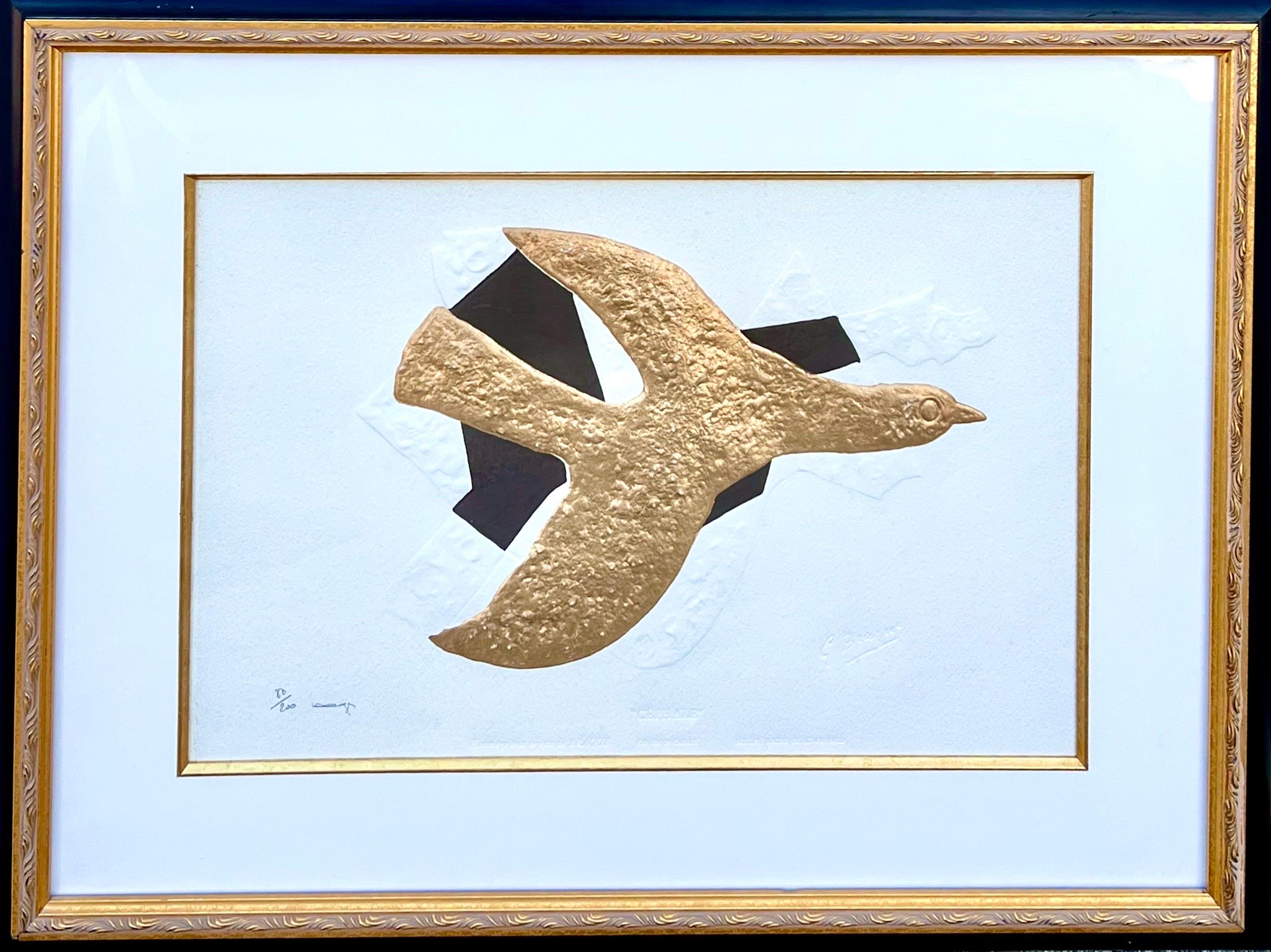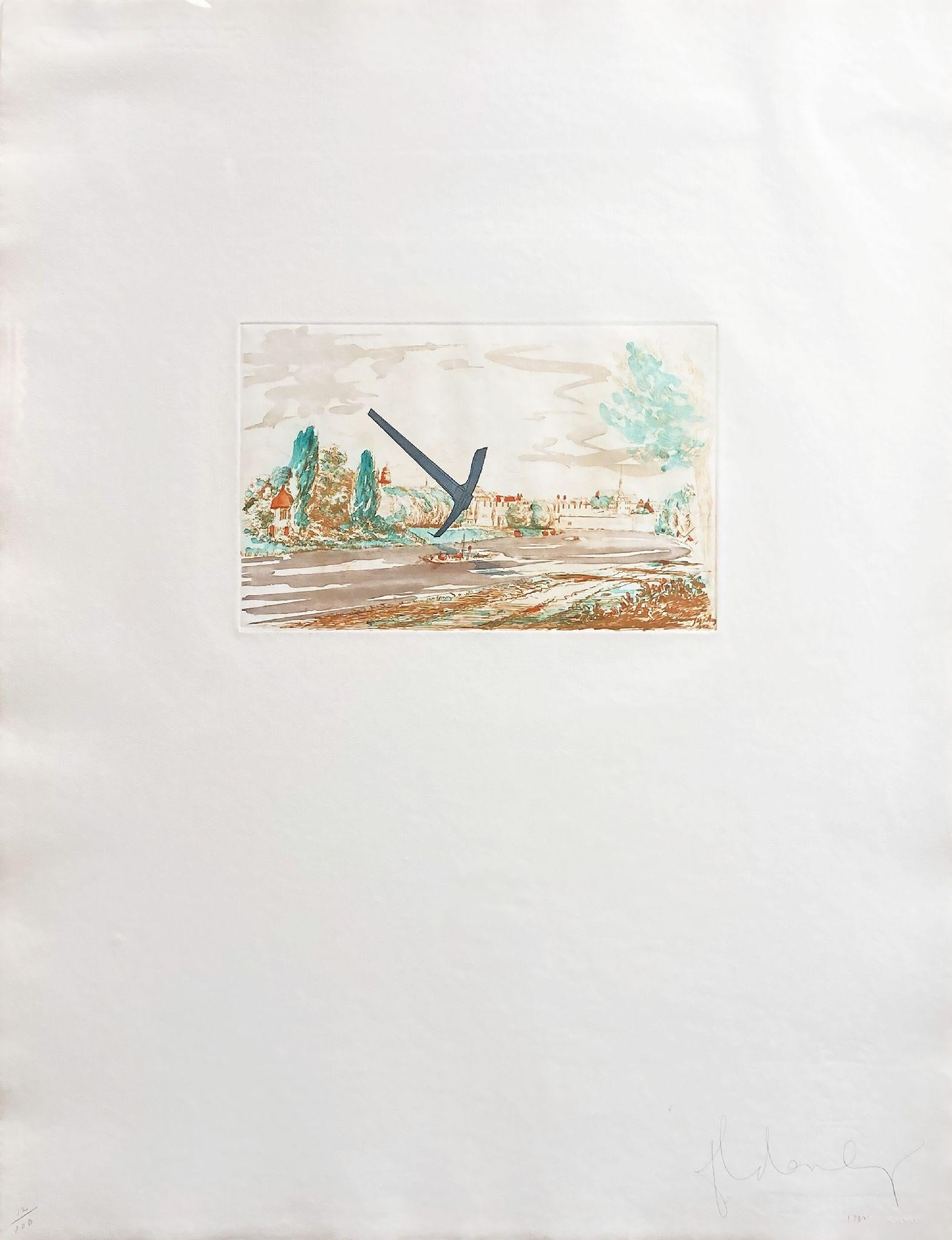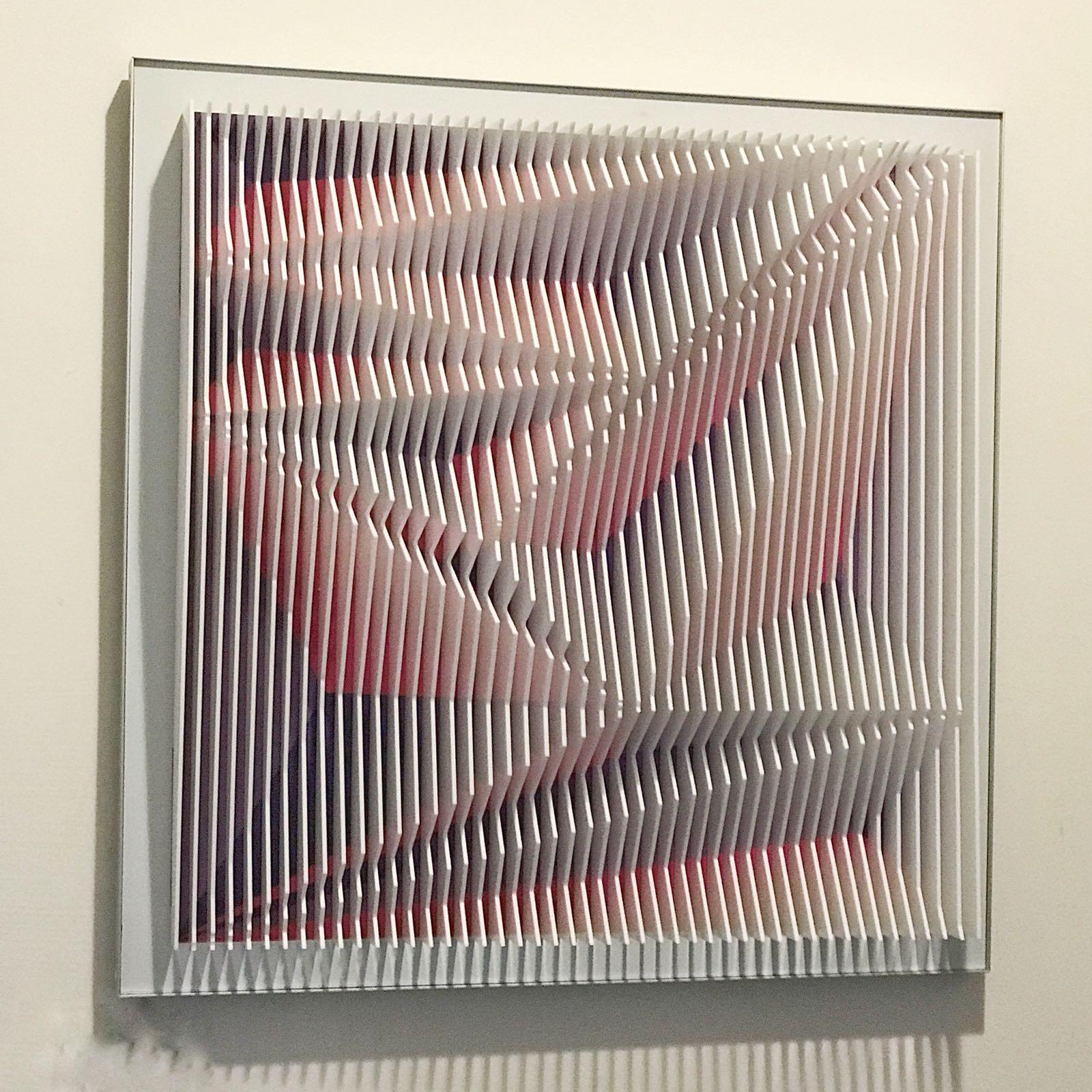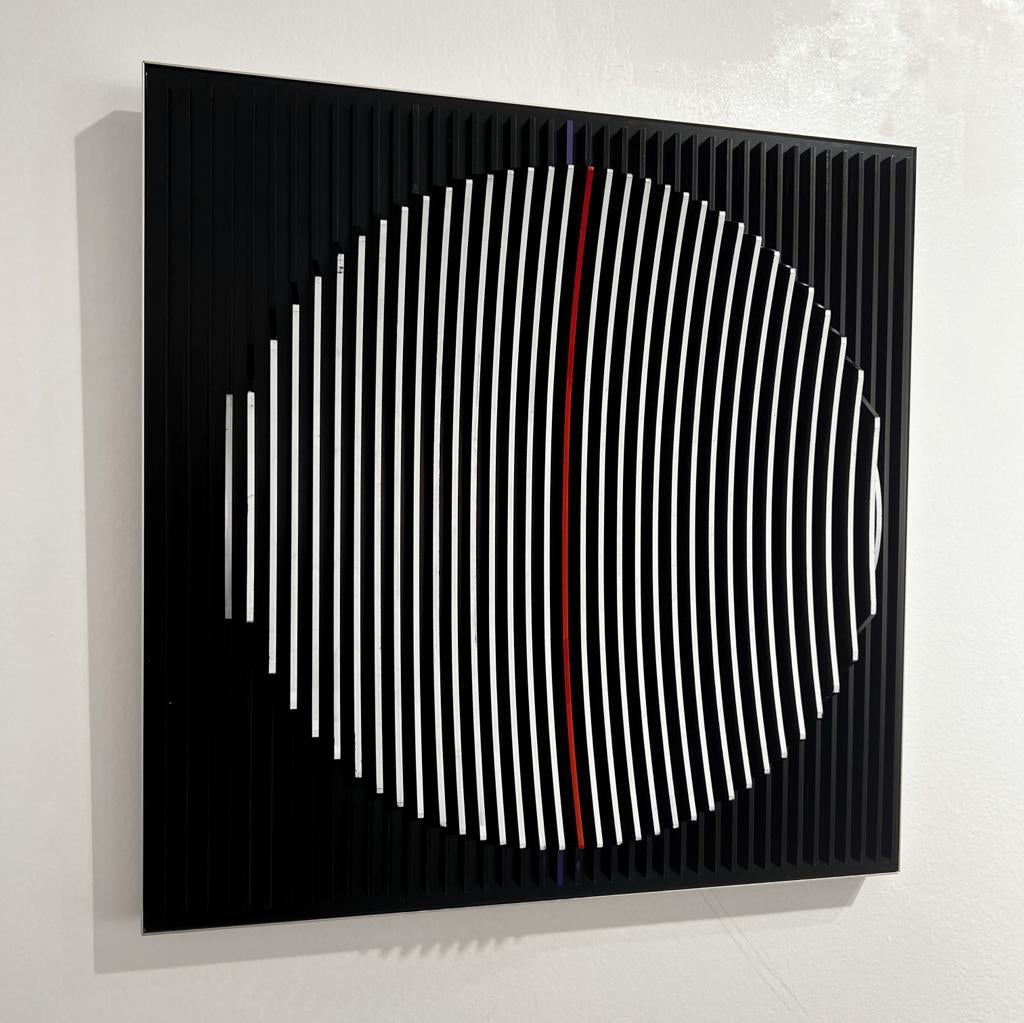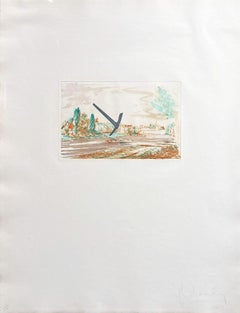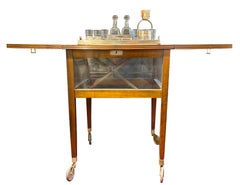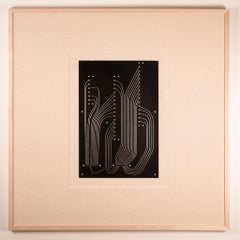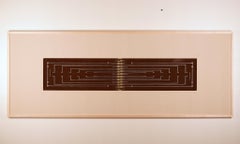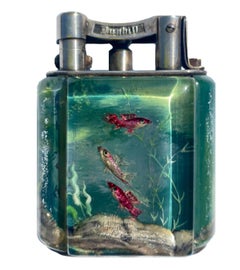
Dunhill Aquarium Lighter
View Similar Items
Want more images or videos?
Request additional images or videos from the seller
1 of 7
Ben SchillingfordDunhill Aquarium LighterCirca 1950
Circa 1950
About the Item
- Creator:Ben Schillingford (1904 - 2000, English)
- Creation Year:Circa 1950
- Dimensions:Height: 3 in (7.62 cm)Width: 2.5 in (6.35 cm)Depth: 1.5 in (3.81 cm)
- Medium:
- Movement & Style:
- Period:
- Condition:
- Gallery Location:Missouri, MO
- Reference Number:1stDibs: LU747310236492
About the Seller
5.0
Vetted Seller
These experienced sellers undergo a comprehensive evaluation by our team of in-house experts.
Established in 1970
1stDibs seller since 2017
141 sales on 1stDibs
Typical response time: 21 hours
More From This SellerView All
- Pickaxe (Spitzhacke) Superimposed on a Drawing of the Site by E.L. GrimmBy Claes OldenburgLocated in Missouri, MOPickaxe (Spitzhacke) Superimposed on a Drawing of the Site by E.L. Grimm, 1982 By Claes Oldenburg (Swedish, American, 1929-2022) Unframed: 26" x 20" Framed: 28.75" x 22.75" Signed and Dated Lower Right Whimsical sculpture of pop culture objects, many of them large and out-of-doors, is the signature work of Swedish-born Claes Oldenburg who became one of America's leading Pop Artists. He was born in Stockholm, Sweden. His father was a diplomat, and during Claes' childhood moved his family from Stockholm to a variety of locations including Chicago where the father was general consul of Sweden and where Oldenburg spent most of his childhood. He attended the Latin School of Chicago, and then Yale University where he studied literature and art history, graduating in 1950, the same year Claes became an American citizen. Returning to Chicago, he enrolled at the Art Institute of Chicago from 1952 to 1954 and also worked as a reporter at the City News Bureau. He opened his own studio, and in 1953, some of his satirical drawings were included in his first group show at the Club St. Elmo, Chicago. He also painted at the Oxbow School of Painting in Michigan. In 1956, he moved to New York where he drew and painted while working as a clerk in the art libraries of Cooper-Union Museum for the Arts of Decoration. Selling his first artworks during this time, he earned 25 dollars for five pieces. Oldenburg became friends with numerous artists including Jim Dine, Red Grooms and Allan Kaprow, who with his "Happenings" was especially influential on Oldenburg's interest in environmental art. Another growing interest was soft sculpture, and in 1957, he created a piece later titled Sausage, a free-hanging woman's stocking stuffed with newspaper. In 1959, he had his first one-man show, held at the Judson Gallery at Washington Square. He exhibited wood and newspaper sculpture and painted papier-mache objects. Some viewers of the exhibit commented how refreshing Oldenburg's pieces were in contrast to the Abstract Expressionism, a style which much dominated the art world. During this time, he was influenced by the whimsical work of French artist, Bernard Buffet, and he experimented with materials and images of the junk-filled streets of New York. In 1960, Oldenburg created his first Pop-Art Environments and Happenings in a mock store full of plaster objects. He also did Performances with a cast of colleagues including artists Lucas Samaras, Tom Wesselman, Carolee Schneemann, Oyvind Fahlstrom and Richard Artschwager, dealer Annina Nosei, critic Barbara Rose, and screenwriter Rudy Wurlitzer. His first wife (1960-1970) Pat Muschinski, who sewed many of his early soft sculptures, was a constant performer in his Happenings. This brash, often humorous, approach to art was at great odds with the prevailing sensibility that, by its nature, art dealt with "profound" expressions or ideas. In December 1961, he rented a store on Manhattan's Lower East Side to house "The Store," a month-long installation he had first presented at the Martha Jackson Gallery in New York. This installation was stocked with sculptures roughly in the form of consumer goods. Oldenburg moved to Los Angeles in 1963 "because it was the most opposite thing to New York I could think of". That same year, he conceived AUT OBO DYS, performed in the parking lot of the American Institute of Aeronautics and Astronautics in December 1963. In 1965 he turned his attention to drawings and projects for imaginary outdoor monuments. Initially these monuments took the form of small collages such as a crayon image of a fat, fuzzy teddy bear looming over the grassy fields of New York's Central Park (1965) and Lipsticks in Piccadilly Circus, London (1966). Oldenburg realized his first outdoor public monument in 1967; Placid Civic Monument took the form of a Conceptual performance/action behind the Metropolitan Museum of Art, New York, with a crew of gravediggers digging a 6-by-3-foot rectangular hole in the ground. Many of Oldenburg's large-scale sculptures of mundane objects elicited public ridicule before being embraced as whimsical, insightful, and fun additions to public outdoor art. From the early 1970s Oldenburg concentrated almost exclusively on public commissions. Between 1969 and 1977 Oldenburg had been in a relationship with Hannah Wilke, feminist artist, but in 1977 he married Coosje van Bruggen, a Dutch-American writer and art historian who became collaborator with him on his artwork. He had met her in 1970, when she curated an exhibition for him at the Stedelijk Museum in Amsterdam. Their first collaboration came when Oldenburg was commissioned to rework Trowel I, a 1971 sculpture of an oversize garden tool, for the grounds of the Kröller-Müller Museum in Otterlo, the Netherlands. Oldenburg has officially signed all the work he has done since 1981 with both his own name and van Bruggen's. In 1988, the two created the iconic Spoonbridge and Cherry sculpture for the Walker Art Center in Minneapolis, Minnesota that remains a staple of the Minneapolis Sculpture Garden as well as a classic image of the city. Typewriter Eraser...Category
20th Century American Modern Mixed Media
MaterialsEtching, Aquatint, Photogravure
- Brown CottonwoodLocated in Missouri, MOBrown Cottonwood, 2005 By Andrew Millner (American, b. 1967) Lightjet Print Mounted on UV Plex Signed Lower Right Unframed: 87" x 44" Framed: 88" x 45" Andrew Millner is a visual artist based in St. Louis, MO. His work investigates the relationship between art and nature, the natural and the made. Millner received a BFA from University of Michigan, in Painting and Sculpture. He has had more than 56 group exhibitions since 1987 and over 15 solo exhibitions at institutions including Miller Yezerski Gallery, Boston, Massachusetts; Ellen Miller Gallery, Boston, Massachusetts; CCA, Santa Fe, New Mexico; Tria Gallery, New York City, New York; Richard Levy Gallery, Albuquerque, New Mexico; David Floria Gallery, Aspen, Colorado; Contemporary Museum St. Louis, St. Louis, Missouri. "I started drawing on the computer in 2005. Previous to that, most of my work had been about finding lines in nature; the contours of leaves, the ripples on rivers, the edges of overlapping hills. Although I was using traditional art materials, I prepared the canvases with slicker and slicker surfaces so that the lines wouldn’t soak into the background but sit on top, preserving the nuances of my hand. I thought of the drawings as photographic, in the diaristic sense of recording moments of time. I enjoyed the easy correspondence of the endless novelty of line in these natural forms and the endless variety of line created by my hand. I couldn’t draw the same leaf twice so my subject and process were well matched. I had the idea to draw every leaf of a tree, but I struggled with the scale and complexity of the subject. How does one bring a tree indoors? How can one see the whole tree and its individual parts simultaneously? I tried traditional strategies and materials but the results were unsatisfactory. I wondered if it would be possible to make the drawing on a computer. Since everything… music, photos, movies & books were being digitized, what about drawing? I wasn’t interested in something computer-generated, but sought to “dumb down” the computer and use it as a repository for simple line drawings. In the program I use, Adobe Illustrator, lines are called “paths”… an apt name since the line exists at no set scale or color. Only later do I assign the attributes of color and thickness. Taking my laptop outdoors, I drew my first tree “en plein air.” Using a digital tablet and pen, I drew simple contours of the leaves and branches. Having these drawings remain in digital form rather than in physical form, opened up interesting possibilities and enabled me to tackle the complexity of a tree in intriguing ways. My lines were free and separate from the background and from each other. I drew the branches individually and then later, I could cobble them together to reconstitute the whole tree. On the screen, I could zoom in and out and draw at different scales simultaneously. I could zoom out to draw a simple contour of the entire trunk and then zoom in to draw the smallest leaf with equal effort. I drew in layers so that as the drawings accumulated I could turn layers “off” so that they wouldn’t obscure subsequent layers. These two novelties, drawing at different scales simultaneously and making parts of the drawing invisible to allow for work on top or behind previous drawings, allowed for the accumulation of hundreds of simple outlines to create a dizzying visual complexity. Subsequent trees I drew from photographs. I would take hundreds of close-ups of a tree from a single point of view and then stitch all of these close ups together on the computer. Sometimes I photographed the same tree in the summer and then in the fall after it lost its leaves. This allowed me to see and draw all of the branches and limbs unadorned and unobscured. I would draw the tree twice, with and without leaves, merging the two drawings into one document. In this way, the drawings comprise and compress great spans of looking over vast time frames and seemingly contradictory close-up and distant points of view. My digital drawings have been outputted in different ways… mostly as photographs printed directly from the digital file or as archival inkjet prints. The results defy easy categorization. Are they drawings, prints, or camera-less photographs...Category
21st Century and Contemporary American Modern Still-life Prints
MaterialsPlexiglass, Inkjet
Price Upon Request - George III Style Mechanical Drinks and Smoking Cabinet (Converts to Table)Located in Missouri, MOGeorge III Style Drinks & Smoking Cabinet (Converts to Table) c. late 19th/early 20th Century Wood, Silver, Glass approx. 30.5" H x 23" W x 19.5" D ...Category
Early 20th Century More Art
MaterialsSilver
- The EncounterBy Ernest TrovaLocated in Missouri, MOErnest Trova "The Encounter" 1994 Chrome Plated Steel Approx 24 x 26 x 24 inches Edition 1/8 Known for his Falling Man series in abstract figural sculpture, he created hard-edge ima...Category
1990s American Modern Figurative Sculptures
MaterialsStainless Steel
Price Upon Request - Regina EnthronedBy Lazzaro DonatiLocated in Missouri, MOLazzaro Donati (Italian 1926-1977) "La Regina" Bronze Signed on Base Size: approx 19 x 9 x 9 inches Lazzaro Donati (1926-1977) was born in Florence in 1926 and attended the Academy of Fine Arts. He began to paint in 1953, and in 1955 held his first exhibition at the Indiano Gallery in Florence. Within three years eleven exhibitions followed in Italy, and as his reputation grew he was invited to give major exhibitions in London, Paris, New York, Chicago, Rio de Janeiro and Montevideo. He is considered one of the foremost contemporary Italian painters and his paintings hang in museums and private collections throughout the Americas, Europe and Asia. Mr. Donati lived and worked at 24 Piazza Donatello in Florence, the square where generations of artists have created works worthy of the great Florentine tradition. As you entered the narrow hallway to his studio, a gilded life-size Venetian angel beckoned you to his door. Once inside, the present faded away and you found yourself in an atelier where early masters might have worked during the Renaissance. Within, luxurious Persian rugs set off the innumerable objects d'art and antique furnishings. Light poured in through the sloping glass wall on the north side. A dramatic stairway led to an overhanging balcony which served as a private gallery where the artist hung some of his favorite early works. To the left of the entrance was a smaller studio where Donati sculpted, with a window overlooking the famous old English cemetery where tourists laid flowers on the grave of Elizabeth Barrett Browning. In the main studio itself, where Donati received his clients in an atmosphere as polished as an office of a top executive, one hardly realized that it was here that the artist actually painted. His easel was covered with Persian blue velvet, the painting on the easel was already framed, his chair was upholstered in red velvet and on his palette the colors were arranged with the precision of a Byzantine mosaic. In a corner stand were his latest works, framed and ready to be sent off to his next exhibition in Europe or America. Donati was a born host with a warm welcome, an elegant man who possessed enormous charm a good nature and a keen sense of humor. Apparently shy, he preferred to speak on subjects extraneous to his art, purposely distracting you from his paintings, then leading you back to them, tactfully and without pretension. He spoke fluent French and English as well as some Spanish and German. "After all", he said, "you've got to know how to sell a painting to everyone." He had no sympathy for the "drip and splash" studios of his contemporaries, preferring to keep his studio tidy and spotless. "Painting is a matter of precision", he said, "If a painter can't put his paint where he wants it to go, I don't see how he can call himself a painter. For me it is absolutely necessary to control the paint." When asked to reveal the technique he used to achieve the enamel-like finish typical of his paintings he answered, "That is a secret between me and my butler. Actually, most of my paintings are done by him!" But in fact behind the façade, Donati was a serious craftsman who devoted to his painting as a way of life and means of expression. From the beginning of his career, his paintings revealed a striving for perfection and continual research in problems of style and technique. His early works indicated a momentary interest in surrealism and abstract art; they were predominantly two dimensional, depending on line and strong color. But by 1958, with his painting The Lady with a Fan...Category
Late 20th Century Modern Figurative Sculptures
MaterialsBronze
Price Upon Request - Piccolo Guerriero (Little Warrior)By Luciano MinguzziLocated in Missouri, MOLuciano Minguzzi (Italian, 1911-2004) Piccolo Guerriero (Little Warrior) c. 1950s Bronze Monogrammed and Numbered 1/5 Height From Base to Top: approx. 12" High Bronze: 6 3/4 inches x 4W x 3D Luciano Minguzzi was born in Bologna in 1911 and died in Milan in 2004. In 1943 he took part in the Fourth Quadrennial of Rome. In 1950 he was awarded the grand prize for sculpture at the XXV Venice Biennale, and attended again in 1952. His works can be found at Museum of the Fabbrica del Duomo, in the Museum of Modern Art in the Vatican and in the Galleries of Modern Art in Rome, Milan, Bologna, Florence, Trieste, Verona, Carrara, Padova, as well as abroad and overseas. Additional Biography (translated from Italian): Luciano Minguzzi ( Bologna , 24 May 1911 - Milan , 30 May 2004 ) was a sculptor and medalist Italian . Image of the exhibition Luciano Minguzzi: sculptures and gouaches 1950-1970 in the Romanesque cloister of the Cathedral of Prato ( Museo dell'Opera del Duomo ), 24 April - 24 May 1971. Photo by Paolo Monti . Index: He made his first experiences under the wise guidance of his father, also a sculptor , continuing his studies at the Academy of Fine Arts in Bologna following the engraving courses held by Giorgio Morandi , those of sculpture under the guidance of Ercole Drei , attending at ' university the lessons Roberto Longhi. Thanks to a scholarship, he stayed in Paris and London , starting to exhibit in 1933 and already at the Roman Quadrennial of 1943 he obtained his first prize, which was followed by others including the Angelicum of 1946 and the first place ex aequo at the Biennale del 1950. Immediately after the war he created the monument to the Partisan and the Partisan for his hometown , located near Porta Lame , in the area where an epic battle between Nazi-Fascists and partisans took place in 1944 . The work, composed of two figures of young people - one of which armed - caught in a moment of great naturalness, was forged with cast bronze from the equestrian statue of Benito Mussolini (by Giuseppe Graziosi ) which was located inside the current "Renato Dall'Ara" Stadium, in turn made with some cannons stolen from the Austrians during the Bolognese Risorgimento uprisings of 1848. Still on the theme linked to war , but with a changed style with more dramatic and expressionist tones , in the fifties he created a series of sculptures inspired by the theme of the men of the Lager and the unknown and anonymous victims, obtaining in 1953 the third prize in the competition for the "Monument to the Unknown Political Prisoner " announced by the Tate Gallery ( London ). In 1950 he won the competition for the "Quinta Porta" of the Milan Cathedral , completed in 1965 . In 1962 he participated, together with the most important international sculptors of the time, in the exhibition Sculptures in the city organized by Giovanni Carandente as part of the V Festival dei Due Mondi in Spoleto . He presented a 1958 iron and bronze sculpture entitled Pas-de-quatre. In 1970 he was given the task of building the "Door of good and evil" of the basilica of St. Peter in the Vatican , on which he worked with vigor and passion for seven years. In 2012, on the occasion of the centenary of the artist's birth, a posthumous anthological exhibition was set up in Bologna at the Fondazione del Monte [1] . He also worked as a medalist: his example is the silver 500 lire coin...Category
Mid-20th Century Modern Abstract Sculptures
MaterialsBronze
Price Upon Request
You May Also Like
- Sleeping Nude Large Wall ArtBy Frank GalloLocated in Delray Beach, FLSleeping Nude Large cast handmade paper, artist signed AP 10/20, 1981 62x52x5.5 wood, linen and lucite box frame. Stunning art wall sculpture by Fran...Category
1980s Modern Nude Sculptures
MaterialsLucite, Handmade Paper
- NotionLocated in East Durham, NYNotion (2022) Silver circuits hand etched on dyed fiberglass board mounted on linen-wrapped wood. "Notion" is a one-of-a-kind piece by artist Lana O. Lana O's retro-future modern ...Category
2010s American Modern Mixed Media
MaterialsSilver
$3,500 - RuminationLocated in East Durham, NY"Rumination" is a one-of-a-kind piece by artist Lana O. Lana O's modern wall art is crafted from exceptionally rare vintage 1970s and 1980s circuit boards, meticulously handmade wit...Category
2010s American Modern Mixed Media
MaterialsGold, Silver
$3,800 - ImitationLocated in East Durham, NYLana O's retro-future modern wall art is crafted from exceptionally rare vintage 1970s and 1980s circuit boards, meticulously handmade with precious metals such as gold and silver. E...Category
2010s American Modern Mixed Media
MaterialsGold, Silver
$4,800 - Rare 18 Karat Gold Leaf Embossed Etching After Georges Braque L'Oiseau d'OrBy Georges BraqueLocated in Surfside, FLAfter Georges Braque (French, 1882-1963) "L'Oiseau d'Or," embossed cast-paper intaglio with 18K gold paint after Braque's Oiseau brooch design, unsigned...Category
20th Century Modern Figurative Prints
MaterialsGold Leaf
- Rare 18 Karat Gold Leaf Embossed Etching After Georges Braque L'Oiseau d'OrBy Georges BraqueLocated in Surfside, FLEmbossed print after Braque, based on his sculpture by the same name. Embossed in the print paper is "'Cephale', Hommage aux bijoux de braque, or fin 23 carat, sculpt heger de Lowen...Category
20th Century Modern Figurative Prints
MaterialsGold Leaf

